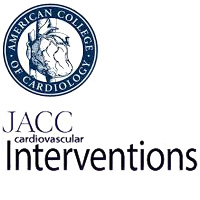Auteurs
Montalescot G, Redheuil A, Vincent F, Desch S, De Benedictis M, Eltchaninoff H, Trenk D, Serfaty JM, Charpentier E, Bouazizi K, Prigent M, Guedeney P, Salloum T, Berti S, Cequier A, Lefèvre T, Leprince P, Silvain J, Van Belle E, Neumann FJ, Portal JJ, Vicaut E, Collet JP; ATLANTIS Investigators of the ACTION Group.
Abstract
Background
Subclinical obstructive valve thrombosis after transcatheter aortic valve replacement (TAVR) is of uncertain frequency and clinical impact.
Aims
The aim of this study was to determine the effects of apixaban vs standard of care on post-TAVR valve thrombosis detected by 4-dimensional (4D) computed tomography.
Methods
The randomized ATLANTIS (Anti-Thrombotic Strategy to Lower All Cardiovascular and Neurologic Ischemic and Hemorrhagic Events After Trans-Aortic Valve Implantation for Aortic Stenosis) trial demonstrated that apixaban 5 mg twice daily was not superior to standard of care (vitamin K antagonists or antiplatelet therapy) after successful TAVR and was associated with similar safety but with more noncardiovascular deaths. Three months after randomization, 4D computed tomography was proposed to all patients to determine the percentage of patients with ≥1 prosthetic valve leaflet with grade 3 or 4 reduced leaflet motion or grade 3 or 4 hypoattenuated leaflet thickening (the primary endpoint) in the intention-to-treat population.
Results
Seven hundred sixty-two participants had complete multiphase datasets and were included in the 4D computed tomographic analysis. The primary endpoint occurred in 33 (8.9%) and 51 (13.0%) patients in the apixaban and standard-of-care groups, respectively. It was reduced with apixaban vs antiplatelet therapy (OR: 0.51; 95% CI: 0.30-0.86) but not vs vitamin K antagonists (OR: 1.80; 95% CI: 0.62-5.25) (Pinteraction = 0.037). The composite of death, myocardial infarction, any stroke, or systemic embolism at 1 year occurred in 10.7% (n = 9 of 84) and 7.1% (n = 48 of 178) of patients with and without subclinical valve thrombosis at 90 days, respectively (HR: 1.68; 95% CI: 0.82-3.44).
Conclusions
Apixaban reduced subclinical obstructive valve thrombosis in the majority of patients who underwent TAVR without having an established indication for anticoagulation. This study was not powered for clinical outcomes.



